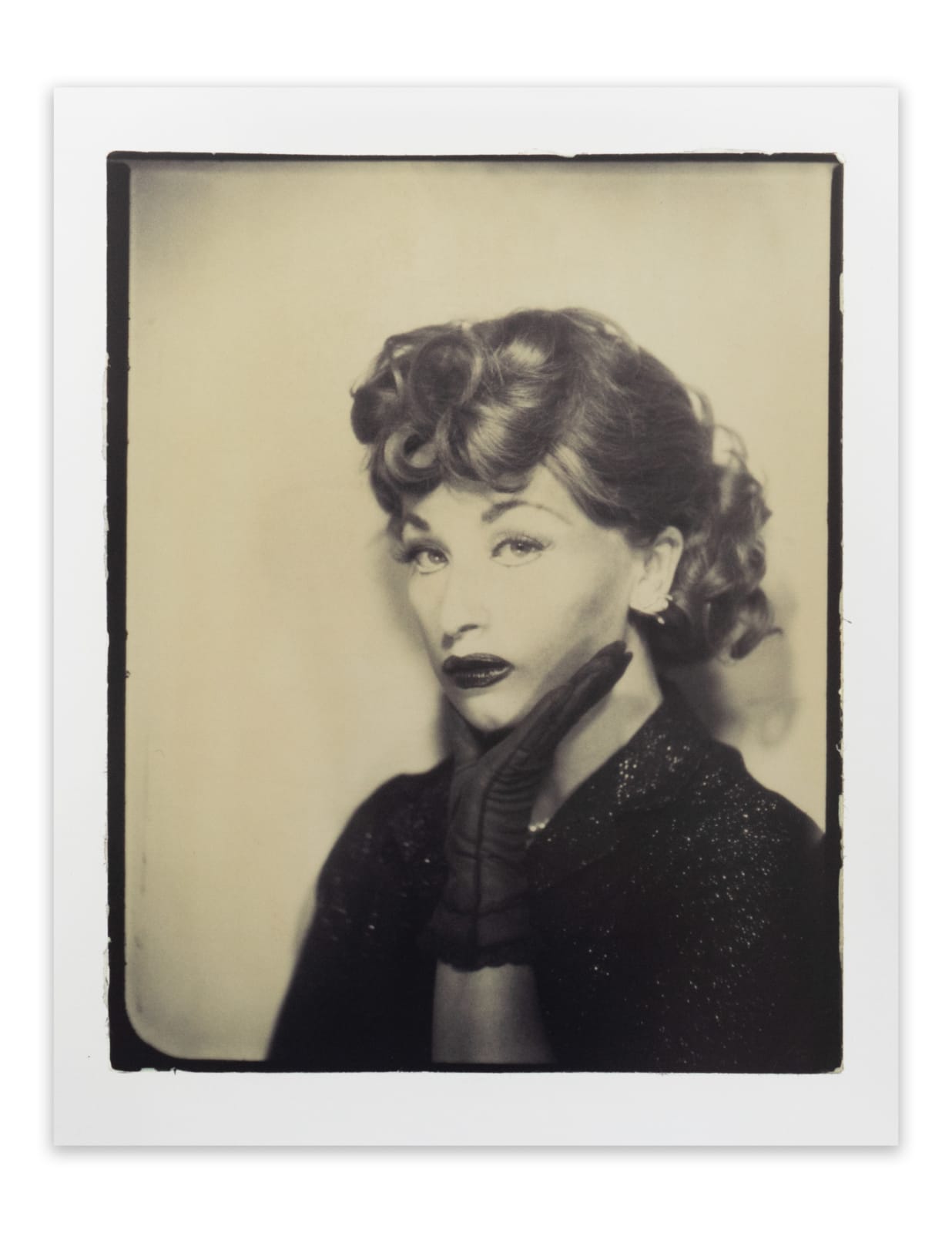


Cindy Sherman
Lucille Ball, 1975
Chromogenic dye coupler print on Fujicolor Crystal Archive paper. Printed 2001
Image: 10 7/16 x 8 3/8 inches
Paper: 12 x 9 1/2 inches
Paper: 12 x 9 1/2 inches
Signed, and dated with annotations in ink and pencil verso
Further images
Cindy Sherman (born 1954) is an American photographer who has taken a keen interest in the notion of women's identity and representations in society and through history. She has been...
Cindy Sherman (born 1954) is an American photographer who has taken a keen interest in the notion of women's identity and representations in society and through history. She has been exploring the feminine from various angles, staging herself as her own model in her series, since the late 1970s. Filmmaking codes and aesthetics have influenced this photographer: she uses costumes, makeup and hairdos to create characters and stereotypes ranging from starlets to femmes fatales. The brunette, blonde or red fake hair becomes an instrument for masquerades that step beyond the ends of self-portraits.
In line with the transvestite portrait or self-portrait tradition stretching from Caravage to Andy Warhol, this photographer becomes Lucille Ball (1911-1989), the well-known heroin of I Love Lucy, an immensely popular 1950s American sitcom featuring a bubbly redhead performing countless funny acts on television screens.
The black-and-white cliché underlines the mimicry between the two women: Cindy Sherman is posing with a three-quarter profile staring at the lens, and sporting the actress' curly hairdo. However, her cold expression and lipstick-clad mouth with a hint of a clown's sad pout sharply contrast with Lucille Ball's images, which hover between humorous and glamorous. Sherman is unrecognisable yet strangely familiar. She, and through her Lucille Ball, vanishes behind the artifices as if she was behind a mask. The black gloved hand's gesture holding the face also suggests that.
In line with the transvestite portrait or self-portrait tradition stretching from Caravage to Andy Warhol, this photographer becomes Lucille Ball (1911-1989), the well-known heroin of I Love Lucy, an immensely popular 1950s American sitcom featuring a bubbly redhead performing countless funny acts on television screens.
The black-and-white cliché underlines the mimicry between the two women: Cindy Sherman is posing with a three-quarter profile staring at the lens, and sporting the actress' curly hairdo. However, her cold expression and lipstick-clad mouth with a hint of a clown's sad pout sharply contrast with Lucille Ball's images, which hover between humorous and glamorous. Sherman is unrecognisable yet strangely familiar. She, and through her Lucille Ball, vanishes behind the artifices as if she was behind a mask. The black gloved hand's gesture holding the face also suggests that.
Literature
Literature:The Museum of Modern Art, Cindy Sherman: The Complete Untitled Film Stills, fig. 1 there titled The Lucy Photo-Booth Shoot
Schor, Cindy Sherman: The Early Works 1975-1977, pp. 37 and 123


